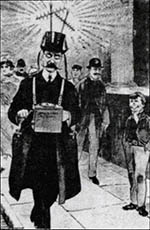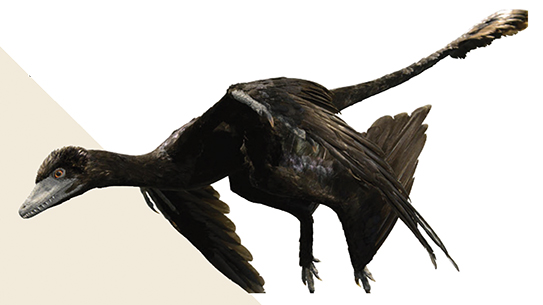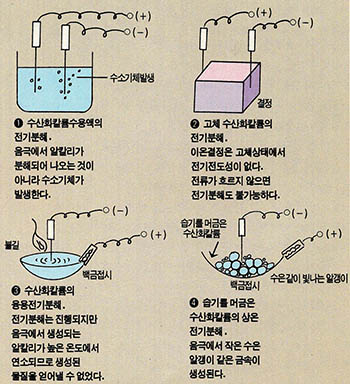캘리포니아주와 다른 여러 서부지역을 휩쓴 무서운 산불은 산야를 황폐시켰지만 또한 과학에 기여하기도 했다. 산불은 인류의 생존에 중대한 의미가 있는 하나의 과학적 논쟁거리에 시사를 던져주었다.
이 논쟁은 1980년에 시작되었다. 이 해에 처음으로 직경 10마일 크기의 소행성이나 혜성이 6천5백만년전에 지구와 충돌, 모든 공룡을 포함한 대부분의 지상의 생물들을 절멸시킨 대 재난을 초래했다는 견해가 등장한 것이다.
해가 거듭될수록 이 충돌설을 지지할 증거가 늘어났으며 아직 의문이 남아있고 다른 견해도 있기는 하지만 대부분의 과학자들은 공룡의 멸종에 관한 이 설명을 받아들이고 있는것 같다.
자연적으로 의문은 그런 충돌이 아무리 엄청날지라도 모든 공룡을 어떻게 죽일수 있었을까 하는데서 생겨났다. 특정지역에서 충돌이 발생했다면 지구의 다른쪽에 있는 생물들이 왜 죽었어야 하나?
그에대한 대답은 충돌은 전지구에 영향을 주는 결과를 빚었다는 것이다. 소행성이 대양에 떨어졌다면 지상의 모든 해안선을 폐허화한 해일을 가져왔을 것이라는 것이다. 또 지각을 뚫는 충돌이 있었다면 화산폭발과 같은 거대한 분출로 산불을 일으켰고 이 불은 지상의 많은 부분에 번져 나갔을 것이라는 것이다. 그리고 그런 해일과 산불이 있었으리라는 시사들이 남아있다.
더군다나 충돌로 인해 대기의 상층에 많은 먼지가 쌓였고 또 산불로 연기가 자욱해져 상당기간 동안 햇빛이 지표면에 닿기가 어려웠으리라는 것이다. 그런 결과로 지상을 휩쓴 춥고 어두운 기상은 대부분의 식물과 식물에 의존하는 동물들을 죽였으리라는 것이다.
그런 논의속에서 1982년 일부 사람들은 전면 핵전쟁이 이와 유사한 결과를 가져올지 모른다고 생각하기 시작했다. 지상에서 수천개의 핵폭탄이 폭발한다고 가정해 보자. 폭탄 하나는 대화재를 가져올 불씨가 될것이며 수천톤의 흙먼지를 일으키게 되리라. 핵폭탄 한개는 한개 소행성의 충돌이 일으키는 재난을 가져오지는 못하겠지만 지상의 여러곳에서 한꺼번에 폭발하면 소행성의 충돌과 같은 효과를 가져올 것이다.
상층권대기에 쌓인 먼지와 연기는 '핵겨울'을 초래할 것이며 이것은 식물들을 죽이고 동물들을 굶게 할것이다. 그러면 우리는 정말로 공룡의 길을 가게될 것이다.
이런 시나리오가 사실적이라면 초강대국이 갖고 있는 수만개의 핵폭탄은 결코 사용되어서는 안된다. 어느 한쪽이 몰래 선제공격을 가해 상대를 무력하게 해서 반격을 피하더라도 승리란 있을 수 없을 것이다. 핵겨울은 공격받지 않은쪽, 그리고 중립국까지도 파괴하게 될 것이다. 정말 핵겨울이 초래될 것인가? 핵전쟁을 두려워하는 사람은 그러리라고 당연히 생각한다. 반면 핵위협이 방위를 위해 존속되어야만 한다고 느끼는 사람들은 핵겨울은 오지 않으며 그런 공포심은 연약한 비둘기파에 의해 고의적으로 과장된 것이라고 생각한다.
이 문제의 진실여부를 가려낼 좋은 실험방법은 없다. 어떤일이 벌어질 것인가를 알아보기 위해 많은 핵폭탄을 폭발해 볼 수는 없다.
그리고 이론만 가지고 주장을 되풀이 할 수도 없는 노릇인데 이는 믿으려하지 않는 사람들에게 이론 자체는 그다지 설득력이 없기 때문이다.
그러나 이제 메릴랜드대학의 천체학자 '앨런 로복'이 1988년 여름의 서부지역 산불결과에 관한 보고서를 발표했다. 산불로 발생한 연기는 북 캘리포니아와 남 오레곤주의 일부 계곡에 갇혀 전화(転化)층으로 되었다. 이들 계곡에 연기는 3주 동안이나 쌓였다.
자연히 연기는 주민들에게 호흡기장애를 초래, 4백명 이상의 사람들이 매일 치료를 받아야만 했다.
그러나 더욱 중요한 사실은 냉각효과가 생겼다는 것이다. 그 3주 동안 계곡 바닥의 매일 최고기온은 평상기온보다 9℉이상 낮았다. 최악의 주에는 30℉정도나 낮았다.
이런 현상의 원인은 80평방마일에 걸친 삼림이 한달간 불타버린데 있다. 핵전쟁시에는 8만평방마일 이상의 삼림이 타버릴 것이라는 추측이 있다. 여기에다 공장, 정유소 등이 불타면 연기로 더욱 나쁜 결과를 빚을 것이다.
보통의 산불로 생긴 매일 매일의 기온변화에 관한 연구는 확실히 '핵겨울'이 배제될 수 없으리라는 것을 느끼게 해준다. 핵전쟁시의 폭발력에 의한 즉각적인 죽음에 덧붙여 춥고 어두운 날씨가 지상에 엄습함으로써 거의 예외없는 기아상태가 닥쳐올 것이다. 내 자신의 생각은 우리는 명백한 선택을 할 수 있다는 것이다. 세계는 평화롭게 살아야하며 그렇지 않을 경우 전혀 살아남을 수 없다는 것이다.
The dreadful wildfires that ravaged the forests in California and other parts of the West, while causing much devastation, managed to serve science. They have yielded information concerning a scientific controversy that may be of the greatest importance to the survival of humantiy.
The controversy had its beginnings in 1980, when it was first suggested that an asteroid or comet, 10 milles across, may have struck the Earth 65 million years ago and produced a disaster that destroyed much of life on Earth, including all the dinosaurs.
As the years have passed, evidence in favor of such a strike has accumulated, and while there are still questions and disagreements, most scientists seem to have accepted this explanation of the dinosaurs' demise.
Naturally, the question arose as to why such a strike, formidable though it may been, should have killed all the dinosaurs. If the collision took place at a particular spot, why should life have been destroyed on the other side of the world, too?
The answer is that such a strike would have produced results that would have affected the whole world. If the asteroid had plunged into the ocean, there would have been tidal waves that would have ravaged all the coastlines of the world. If it had punctured the Earth's crust, the vastness of the volcanolike eruption would have started forest fires that would have spread over much of the world. And there are indications of such tidal waves and widespread fires having taken place at the time.
Moreover, there would have have been so much dust thrown up into the upper atmosphere by the strike, and smoke from the forest fires as well, that the sun's light would have been prevented from reaching the Earth's surface for a period of time. The cold and dark that would then have prevailed would have killed most of Earth's vegetation and the animals that depended upon it.
Then, beginning in 1982, some people began to wonder whether an allout nuclear war might not produce similar effects. Imagine thousands of nuclear bombs being exploded on Earth. Each one would create a fireball that would start a conflagration. Each one would cast tons of soil into the air. No one of them would do the damage of a single asteroid strike, but all of them together, striking in different areas of the Earth, might do so.
The dust and smoke in the upper atmosphere might start a "nuclear winter" that would kill vegetation and starve animal lifeand then we would go the way of the dinosaurs, quite literally.
If this scenario is true, then the tens of thousands of nuclear bombs accumulated by the superpowers can never be used. Even if one side managed to carry through a sneak first attack that crippled the other side and prevented retaliation, there would be no victory. The nuclear winter would then destroy the untouched power as welland all the neutrals.
The question is, though, would a "nuclear winter" really result? Those people who fear a nuclear war naturally think it would. Those people, on the other hand, who feel that the threat of a nuclear war must be maintained for defense, think it wouldn't and that the fears are being deliberately exaggerated by softheaded pacifists.
Nor is there any good way of testing the matter. You can't explode a vast number of nuclear bombs just to see what would happen. And you can't argue just from theory since that wouldn't be convincing to those who refuse to believe.
But now Alan Robock, a meteorologist of the University of Maryland, has reported on the effects ot the Western wildfires of the summer of 1988. Smoke emitted from those fires was trapped over some valleys in Northern California and Southern Oregon by a inversion layer. Smoke accumulated there for three weeks.
Naturally, this created respiratory problems for people, so that more than 400 persons had to be treated each day.
More important, however, was that there was a cooling effect. Daily maximum temperatures on the valley floors were lower than normal by more than 9 degrees Fahrenheit over that threeweek period. During the worst week of the interval, temperatures were down by nearly 30 degrees Fahrenheit.
The cause of this phenomenon was the burning over the period of a month of 80 squares miles of forest. There have been estimates that in a nuclear war more than 80,000 square miles of forest would burn. The burning of industrial plants, oil refineries and so on would add additional smoke of a worse type.
This careful study of day-to-day temperatures in the case of ordianry forest fires certainly makes it seem that a "nuclear winter" cannot be ruled out. In addition to the immediate deaths by the explosive blasts, there would be almost universal starvation as a cold darkness fell across the world.
My own feeling is that we face a clear choice. The word must live in peace, or it won't live at all.
(c) 1988, Los Angeles Times Synricate
이 논쟁은 1980년에 시작되었다. 이 해에 처음으로 직경 10마일 크기의 소행성이나 혜성이 6천5백만년전에 지구와 충돌, 모든 공룡을 포함한 대부분의 지상의 생물들을 절멸시킨 대 재난을 초래했다는 견해가 등장한 것이다.
해가 거듭될수록 이 충돌설을 지지할 증거가 늘어났으며 아직 의문이 남아있고 다른 견해도 있기는 하지만 대부분의 과학자들은 공룡의 멸종에 관한 이 설명을 받아들이고 있는것 같다.
자연적으로 의문은 그런 충돌이 아무리 엄청날지라도 모든 공룡을 어떻게 죽일수 있었을까 하는데서 생겨났다. 특정지역에서 충돌이 발생했다면 지구의 다른쪽에 있는 생물들이 왜 죽었어야 하나?
그에대한 대답은 충돌은 전지구에 영향을 주는 결과를 빚었다는 것이다. 소행성이 대양에 떨어졌다면 지상의 모든 해안선을 폐허화한 해일을 가져왔을 것이라는 것이다. 또 지각을 뚫는 충돌이 있었다면 화산폭발과 같은 거대한 분출로 산불을 일으켰고 이 불은 지상의 많은 부분에 번져 나갔을 것이라는 것이다. 그리고 그런 해일과 산불이 있었으리라는 시사들이 남아있다.
더군다나 충돌로 인해 대기의 상층에 많은 먼지가 쌓였고 또 산불로 연기가 자욱해져 상당기간 동안 햇빛이 지표면에 닿기가 어려웠으리라는 것이다. 그런 결과로 지상을 휩쓴 춥고 어두운 기상은 대부분의 식물과 식물에 의존하는 동물들을 죽였으리라는 것이다.
그런 논의속에서 1982년 일부 사람들은 전면 핵전쟁이 이와 유사한 결과를 가져올지 모른다고 생각하기 시작했다. 지상에서 수천개의 핵폭탄이 폭발한다고 가정해 보자. 폭탄 하나는 대화재를 가져올 불씨가 될것이며 수천톤의 흙먼지를 일으키게 되리라. 핵폭탄 한개는 한개 소행성의 충돌이 일으키는 재난을 가져오지는 못하겠지만 지상의 여러곳에서 한꺼번에 폭발하면 소행성의 충돌과 같은 효과를 가져올 것이다.
상층권대기에 쌓인 먼지와 연기는 '핵겨울'을 초래할 것이며 이것은 식물들을 죽이고 동물들을 굶게 할것이다. 그러면 우리는 정말로 공룡의 길을 가게될 것이다.
이런 시나리오가 사실적이라면 초강대국이 갖고 있는 수만개의 핵폭탄은 결코 사용되어서는 안된다. 어느 한쪽이 몰래 선제공격을 가해 상대를 무력하게 해서 반격을 피하더라도 승리란 있을 수 없을 것이다. 핵겨울은 공격받지 않은쪽, 그리고 중립국까지도 파괴하게 될 것이다. 정말 핵겨울이 초래될 것인가? 핵전쟁을 두려워하는 사람은 그러리라고 당연히 생각한다. 반면 핵위협이 방위를 위해 존속되어야만 한다고 느끼는 사람들은 핵겨울은 오지 않으며 그런 공포심은 연약한 비둘기파에 의해 고의적으로 과장된 것이라고 생각한다.
이 문제의 진실여부를 가려낼 좋은 실험방법은 없다. 어떤일이 벌어질 것인가를 알아보기 위해 많은 핵폭탄을 폭발해 볼 수는 없다.
그리고 이론만 가지고 주장을 되풀이 할 수도 없는 노릇인데 이는 믿으려하지 않는 사람들에게 이론 자체는 그다지 설득력이 없기 때문이다.
그러나 이제 메릴랜드대학의 천체학자 '앨런 로복'이 1988년 여름의 서부지역 산불결과에 관한 보고서를 발표했다. 산불로 발생한 연기는 북 캘리포니아와 남 오레곤주의 일부 계곡에 갇혀 전화(転化)층으로 되었다. 이들 계곡에 연기는 3주 동안이나 쌓였다.
자연히 연기는 주민들에게 호흡기장애를 초래, 4백명 이상의 사람들이 매일 치료를 받아야만 했다.
그러나 더욱 중요한 사실은 냉각효과가 생겼다는 것이다. 그 3주 동안 계곡 바닥의 매일 최고기온은 평상기온보다 9℉이상 낮았다. 최악의 주에는 30℉정도나 낮았다.
이런 현상의 원인은 80평방마일에 걸친 삼림이 한달간 불타버린데 있다. 핵전쟁시에는 8만평방마일 이상의 삼림이 타버릴 것이라는 추측이 있다. 여기에다 공장, 정유소 등이 불타면 연기로 더욱 나쁜 결과를 빚을 것이다.
보통의 산불로 생긴 매일 매일의 기온변화에 관한 연구는 확실히 '핵겨울'이 배제될 수 없으리라는 것을 느끼게 해준다. 핵전쟁시의 폭발력에 의한 즉각적인 죽음에 덧붙여 춥고 어두운 날씨가 지상에 엄습함으로써 거의 예외없는 기아상태가 닥쳐올 것이다. 내 자신의 생각은 우리는 명백한 선택을 할 수 있다는 것이다. 세계는 평화롭게 살아야하며 그렇지 않을 경우 전혀 살아남을 수 없다는 것이다.
The dreadful wildfires that ravaged the forests in California and other parts of the West, while causing much devastation, managed to serve science. They have yielded information concerning a scientific controversy that may be of the greatest importance to the survival of humantiy.
The controversy had its beginnings in 1980, when it was first suggested that an asteroid or comet, 10 milles across, may have struck the Earth 65 million years ago and produced a disaster that destroyed much of life on Earth, including all the dinosaurs.
As the years have passed, evidence in favor of such a strike has accumulated, and while there are still questions and disagreements, most scientists seem to have accepted this explanation of the dinosaurs' demise.
Naturally, the question arose as to why such a strike, formidable though it may been, should have killed all the dinosaurs. If the collision took place at a particular spot, why should life have been destroyed on the other side of the world, too?
The answer is that such a strike would have produced results that would have affected the whole world. If the asteroid had plunged into the ocean, there would have been tidal waves that would have ravaged all the coastlines of the world. If it had punctured the Earth's crust, the vastness of the volcanolike eruption would have started forest fires that would have spread over much of the world. And there are indications of such tidal waves and widespread fires having taken place at the time.
Moreover, there would have have been so much dust thrown up into the upper atmosphere by the strike, and smoke from the forest fires as well, that the sun's light would have been prevented from reaching the Earth's surface for a period of time. The cold and dark that would then have prevailed would have killed most of Earth's vegetation and the animals that depended upon it.
Then, beginning in 1982, some people began to wonder whether an allout nuclear war might not produce similar effects. Imagine thousands of nuclear bombs being exploded on Earth. Each one would create a fireball that would start a conflagration. Each one would cast tons of soil into the air. No one of them would do the damage of a single asteroid strike, but all of them together, striking in different areas of the Earth, might do so.
The dust and smoke in the upper atmosphere might start a "nuclear winter" that would kill vegetation and starve animal lifeand then we would go the way of the dinosaurs, quite literally.
If this scenario is true, then the tens of thousands of nuclear bombs accumulated by the superpowers can never be used. Even if one side managed to carry through a sneak first attack that crippled the other side and prevented retaliation, there would be no victory. The nuclear winter would then destroy the untouched power as welland all the neutrals.
The question is, though, would a "nuclear winter" really result? Those people who fear a nuclear war naturally think it would. Those people, on the other hand, who feel that the threat of a nuclear war must be maintained for defense, think it wouldn't and that the fears are being deliberately exaggerated by softheaded pacifists.
Nor is there any good way of testing the matter. You can't explode a vast number of nuclear bombs just to see what would happen. And you can't argue just from theory since that wouldn't be convincing to those who refuse to believe.
But now Alan Robock, a meteorologist of the University of Maryland, has reported on the effects ot the Western wildfires of the summer of 1988. Smoke emitted from those fires was trapped over some valleys in Northern California and Southern Oregon by a inversion layer. Smoke accumulated there for three weeks.
Naturally, this created respiratory problems for people, so that more than 400 persons had to be treated each day.
More important, however, was that there was a cooling effect. Daily maximum temperatures on the valley floors were lower than normal by more than 9 degrees Fahrenheit over that threeweek period. During the worst week of the interval, temperatures were down by nearly 30 degrees Fahrenheit.
The cause of this phenomenon was the burning over the period of a month of 80 squares miles of forest. There have been estimates that in a nuclear war more than 80,000 square miles of forest would burn. The burning of industrial plants, oil refineries and so on would add additional smoke of a worse type.
This careful study of day-to-day temperatures in the case of ordianry forest fires certainly makes it seem that a "nuclear winter" cannot be ruled out. In addition to the immediate deaths by the explosive blasts, there would be almost universal starvation as a cold darkness fell across the world.
My own feeling is that we face a clear choice. The word must live in peace, or it won't live at all.
(c) 1988, Los Angeles Times Synricate

















